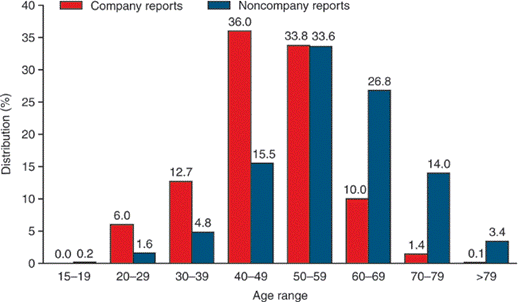
 |
|||
|
NIOSH Programs > Hearing Loss Prevention > Occupational Risks
Hearing Loss PreventionInputs: Occupational Safety and Health Risks
|
|||||||||||||||||||||||||||||||||||||||||||||||||||||||||||||||||||||||||
Table 1. Comparison of models for estimating the excess risk of hearing impairment at age 60 after a 40-year working lifetime of exposure to occupational noise (exchange rate in parentheses). |
||||||||||
|
.5-1-2 kHz Definition |
1-2-3 kHz Definition |
1-2-3-4 kHz Definition |
|||||||
Average Exposure Level (dBA) |
1971- |
1972-NIOSH |
1973-EPA |
1990-ISO |
1997-NIOSH |
1972-NIOSH |
1990-ISO |
1997-NIOSH |
1990- |
1997-NIOSH |
90 |
21 |
29 |
22 |
3 |
23 |
29 |
14 |
32 |
17 |
25 |
85 |
10 |
15 |
12 |
1 |
10 |
16 |
4 |
14 |
6 |
8 |
80 |
0 |
3 |
5 |
0 |
4 |
3 |
0 |
5 |
1 |
1 |
Source: Chapter 2, “Basis for the Exposure Standard", Criteria for a Recommended Standard: Occupational Noise Exposure – Revised Criteria, 1998
Additionally, as part of the NIOSH Project SENSOR surveillance effort, a limited amount of data on other aspects of occupational hearing loss has also been gathered. In partnership with the Michigan Department of Labor and Economic Growth and Michigan State University (http://oem.msu.edu/sensor.asp), NIOSH has also published data on the distribution of hearing loss by age and industry (see Figures 1 and 2):

Source: NIOSH Worker Health Chartbook, 2004 DHHS (NIOSH) Publication 2004-146
http://www2.cdc.gov/NIOSH-Chartbook/imagedetail.asp?imgid=72

Source: NIOSH Worker Health Chartbook, 2004 DHHS (NIOSH) Publication 2004-146
http://www2.cdc.gov/NIOSH-Chartbook/imagedetail.asp?imgid=73
Until recently, there was no requirement to record and track occupational hearing loss. However, in response to NIOSH recommendations, OSHA updated requirements in 2003 for recording occupational illness and injury. A new regulation (29 CFR 1910.04 mandated that beginning in 2004 occupational hearing loss must be recorded on the OSHA Log 300. In November of 2005 the Bureau of Labor Statistics reported the results for this first year of recording occupational hearing loss (Figure 3). Figure 3 depicts the percentage of recordable hearing loss by work sector (2-digit NAICS).

Of the 28,400 cases of occupational hearing loss recorded in 2004, the majority were from the manufacturing sector. The number of recorded cases of hearing loss is likely to be an underestimate of work-related hearing loss cases for several reasons. First, the OSHA criteria for a significant decrease in hearing from a worker’s baseline hearing test, a standard threshold shift (STS), is much lower than the criteria needed to record changes on an OSHA Log 300. An STS is a change of 10 dB or more averaged across 2, 3, and 4 kHz. To be recordable, the average change from audiometric zero must be 25 dB. OSHA provides a more detailed description of these criteria at http://www.osha.gov/pls/oshaweb/owadisp.show_document?p_table=STANDARDS&p_id=9641.
Additionally, it should be noted that hearing loss may not be well documented in the construction sector because these workers are not required to be given hearing tests. Finally, only the small number of workers in the mining sector who are covered by OSHA (rather than MSHA) would have qualifying hearing losses recorded on an OSHA Log 300. Nevertheless, the new requirement to record work-related hearing loss is a major improvement in our ability to monitor the incidence of occupational hearing loss.
Additional BLS data on work-related hearing loss can be found here:
http://www.bls.gov/iif/oshwc/osh/os/ostb1481.pdf
